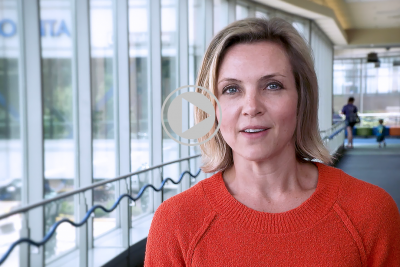Kaylee’s terrified eyes stared up at me while the EMT loosened the straps that held her to the stretcher. Her crying mother told me the story: she came home from daycare with a runny nose, and after dinner she had a fever of 103. She gave her children’s ibuprofen and put her in the bath to try to get the temp down. In the bath tub, Kaylee started jerking her legs and feet and her eyes rolled back in her head. The seizure lasted just a few minutes and had stopped by the time the ambulance arrived. Now Kaylee seems too sleepy, her mother says. Her temperature at the hospital is 99 degrees. It’s another febrile seizure, or a seizure due to high fever in a child. Febrile seizures are a very common reason for children to come to the emergency room. But as a pediatrician, I can’t fix febrile seizures. So when should parents bring children with febrile seizures to the emergency room?
After a febrile seizure, the doctor does need to ask a few questions to make sure the child is safe.
- How long did the seizure last? Common febrile seizures last less than five minutes, usually 1-2 minutes, although it can seem like an eternity to a parent. If the seizure lasted more than 5 minutes, the cause of the seizure might be something other than fever, and it is very important that the child be seen by a doctor immediately.
- What did the jerking of the seizure look like? Doctors worry when the jerking of the seizure was “focal” or localized to just one part of the body. In common febrile seizures, the jerking is all-over, on both the left and right sides of the body. The child also does not respond to questions and will not talk. If you try to hold a jerking arm or leg, it still jerks. If the seizure did not look like this, the doctor will need to do more tests.
- Is your child acting normally after the seizure? Most children will have a sleepy period after a seizure, lasting from a few minutes to about an hour. The medical term for this sleepiness is “post-ictal.” If a child does not act normally within an hour or so, he or she needs immediate medical attention.
- Why does the child have a fever? This is the most important question to answer after a febrile seizure. Rarely, febrile seizures can be caused by meningitis. Any child with neck pain or abnormal behavior with fever and seizure needs tests for meningitis. Children without a clear cause of fever, such as ear infection, also need additional tests and treatment.
Myths and facts about febrile seizures:
- Febrile seizures are due to high fever: Myth. Febrile seizures are most likely to occur when the body rapidly changes temperature. This can be a rapid rise in temperature due to infection or a rapid fall in temperature. Rapid falls in temperature can occur if you do too many things at once to try to get the fever down. For example, giving ibuprofen and a cool bath at the same time. It is best to treat fever with one thing at a time.
- Febrile seizures are dangerous: Not usually. The biggest risk of febrile seizures is injury during the seizure, such as a fall and a bump on the head. It is important to make sure the seizure is really only due to fever by asking the questions above.
- Febrile seizures cause epilepsy: Myth. Epilepsy, or recurrent seizures not due to fever, is not caused by febrile seizures.
- Febrile seizures run in families: True. If you had seizures with fever as a child, your children have a higher risk of febrile seizures.
- One febrile seizure invites another: True. Once your child has had one febrile seizure, they are at high risk for another seizure the next time they have a rapid change in body temperature.
Do you have more questions about febrile seizures? Our St. Louis Children’s Hospital nurses are happy to speak with you. Call 314-454-KIDS anytime.





Comments